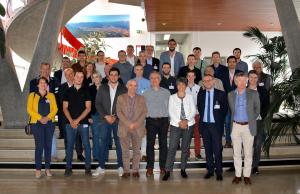CEA delivers ITER cryogenic instrumentation
The ITER Organization has relied on the French CEA institute and its expertise in cryogenics and large superconducting magnets for the specialized instrumentation needed to control and protect the ITER magnets during the cooling operation. This past summer the full scope of the procurement—more than 3,000 devices—was completed on time, and to cost, quality and performance specifications.
Cryogenic temperature chains and flowmeters are small devices that will convey accurate measurements of magnet temperature and helium flowrate from their positions inside the magnet structures, terminals and supply lines (feeders). This data is critical to ensuring that the magnets are operating under well controlled and reliable conditions, and that helium flow distribution to the magnets is correct.
The measurement solutions are based on proven technologies, augmented by specific development to meet ITER's challenging performance and environmental constraints.
Two separate contracts were placed in 2014 with the French Alternative Energies and Atomic Energy Commission (CEA Grenoble) for this work, carried out under the supervision of ITER Magnet Instrumentation and In-Vessel Coil Section.
The first order was for 2,200 cryogenic temperature chains—three-part instruments (a sensor, signal interfaces and a signal conditioner) that can measure temperature over a wide range (3K to 300K), relay low-level signals out 350 metres to the electronics with high accuracy, and operate in challenging radiation and power dissipation conditions. The second order comprised 277 cryogenic flowmeters that will be installed in the feeder coil termination boxes to measure the helium volumetric flow. In addition, 860 pressure measurement devices are required that will operate in normal (and not cryogenic) conditions.
Both components went through extensive design and qualification phases before series production could begin.
This past summer the full scope of the procurement—more than 3,000 devices—was successfully completed on time, and to cost, quality and performance specifications. After inspection at the neighbouring Magnet Infrastructure Facilities for ITER (MIFI, hosted by CEA Cadarache) this equipment will be shipped by the ITER Organization to the Domestic Agencies procuring magnet structures, terminals and feeders.



